Bring down the dams!
California’s Eel River will soon run free. The news prompts me to share my collection of undamming stories, from Maine to Mississippi, India to China.
This week, I offer a roundup of stories that are all about water. We can fix past mistakes and revive wetlands and rivers. Sometimes, all it takes is a little more water, and life explodes. Shall we have a dam, dike and culvert-dismantling extravaganza? Let’s go!
Two dams slated for demolition on California’s Eel River
Salmon will soon freely swim up several hundred miles of river in Northern California. Tribes and angler groups are celebrating an agreement announced last week to tear down two aging dams along a river that once saw a million salmon and steelhead per year.
The Eel River will be the longest free-flowing river in California once the Potter Valley and Scott dams are removed. Both are defunct hydropower dams built over 100 years ago.
The news comes on the heels of last fall’s demolition of four dams along the Klamath River just north of the Eel.
Conservation group Trout Unlimited cheered the Eel River news:
The dams blocked salmon, steelhead, lamprey and other native fish from 288 miles of high-quality spawning and rearing habitat, and trans-basin water withdrawals would often leave flows too low for salmonids in the summer, especially in drought years.
Recovery plans for salmon and steelhead along California’s North Coast prioritize restoration of habitat and connectivity in the Eel as vital for rebuilding their populations in this region. In particular, the Eel’s headwaters are considered some of the best remaining intact habitat for Summer Steelhead in the southernmost part of their range.
Dams not only block fish from reaching prime spawning habitat upstream, their reservoirs produce unnaturally warm water that is harmful to fish downstream.
The difficult negotiations considered a community of farmers in Potter Valley that depend on water that is diverted from the Eel River — through a tunnel — to their own county and watershed. As part of the agreement, some water will still be sent through the mountains, farmers will now pay the Round Valley Indian Tribes for their water, and that money will be used for river restoration. A win-win for all!
Read more on this historic agreement:
“As I read this, I get chills,” by
, who writes Western Water Notes.Rare birds land at Chinese wetland after managers increase water flows
Last fall, researchers discovered two more rare bird species nesting in the Yellow River Delta National Reserve, an important wetland stopover in the East Asian-Australasian Flyway that some call the “international airport for birds.”
Endangered mute swan and black-faced spoonbill have come to breed in the reserve, according to China Daily. The species of birds that use the reserve now number 373; endangered birds number 26; threatened birds number 65. About 200 pairs of endangered oriental storks nest each year in the reserve.
In recent years, reserve managers more than quadrupled the amount of water diverted from the Yellow River to the wetland. New channels are now delivering 175 million cubic meters (46 billion gallons) yearly.
“Water is the foundation of wetland ecosystems,” said Liu Jing, deputy director of the reserve’s management committee. “Only with water can plants thrive and the wetland vegetation be restored, providing food and shelter for birds.”
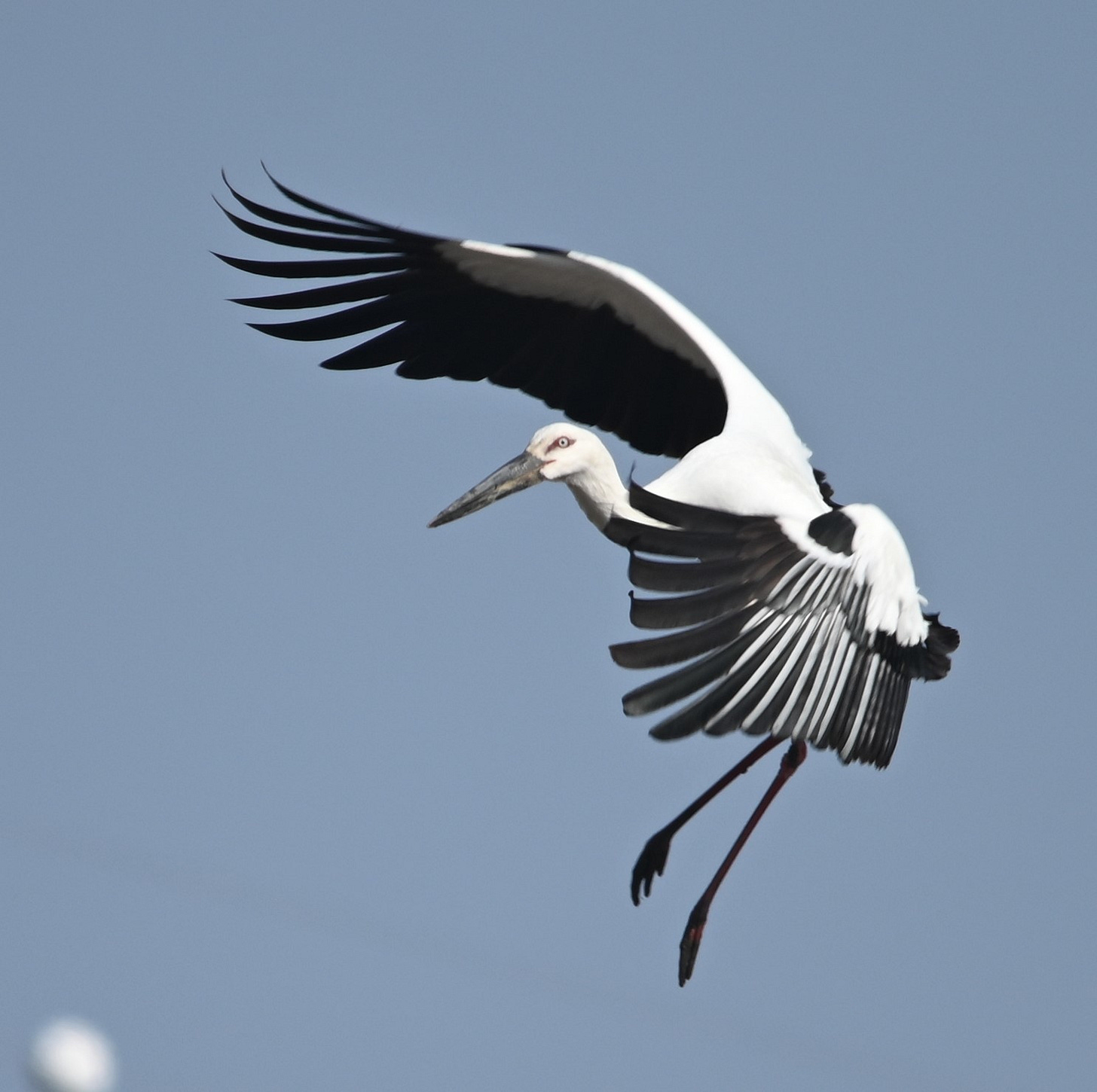
India: Man Sagar Lake restoration brings back migratory birds
Twenty years ago, Man Sagar Lake was a dried-up and polluted mudflat. Unregulated irrigation consumed all its water. Now, flamingoes, storks, pelicans, egrets and ducks are among the 180 species of birds benefiting from the decades-long effort to clean up the 500-year-old manmade lake near Jaipur. Artificial islands were constructed for nesting sites, sewage diverted away from the lake, and water flows improved. The lake level is now mandated to be at least two meters.
Read more: Bird Species visiting Man Sagar Lake, Jal Mahal
Thailand: Former tobacco factory transforms into urban forest and wetland
In December, a new park opened in Bangkok to help reduce floods. Architects transformed concrete to wetlands, Mongabay reports:
The grounds of a former tobacco factory are now the 41-hectare (102-acre) Benjakitti Forest Park. This urban wetland has been designed not only to regulate stormwater, but clean contaminated water and provide habitat for wildlife. Native vegetation such as the rain tree (Samanea saman), bo tree (Ficus religiosa) and khee lek (senna siamen) were planted within the grounds that are designed to retain 87 million liters (23 million gallons) of water.
Check out more of the transformation at International Barcelona Biennial.
Maine communities and tribes push to bring down more dams
In Maine, where decades of restoration along its rivers have produced promising results for endangered Atlantic salmon, communities are rallying to take down more dams. A citizens committee formed by the town of Camden voted this week to recommend removing Montgomery Dam, which blocks the mouth of the Megunticook River as it enters Penobscot Bay.
"A river impounded by the dam lacks aquatic habitat quality and diversity," the committee’s report said. "Its removal would restore sea-run fish habitat for alewives, Atlantic salmon, and brook trout, and provide the greatest potential for recovery of ecological health in the Megunticook Watershed. Removal also aligns with Maine's current broader commitment to ecosystem recovery and supports the cultural and economic significance of sustainable fisheries in the Gulf of Maine."
Last week, the Penobscot Nation said it would alter three midcoast dams to allow Atlantic salmon, alewives, American eels and brook trout to migrate to their native spawning grounds. These multimillion-dollar projects are funded by the Inflation Reduction Act and have not been affected by Washington’s funding freezes.
And last month, the Yarmouth Town Council voted unanimously to tear down two dams along the Royal River to improve fish passage.
“This resolution to restore the Royal River to a more natural, free-flowing state is a culmination of years of study and debate,” said town councilor David Craig (quoted by the Maine Monitor). “It’s been a long, complex and sometimes emotional process and a productive one … Now it’s time to free the Royal.”
California completes largest tidal wetlands restoration effort to date
Back in California, last fall, officials breached a levee at Lookout Slough to complete the state’s largest ever tidal wetlands restoration project, flooding over 3,400 acres of restored habitat for fish, birds and other wildlife. The new wetland will provide flood protection, as well as non-motorized boating, fishing and hunting opportunities. The land was originally tidal wetlands, but was diked and converted to farmland.
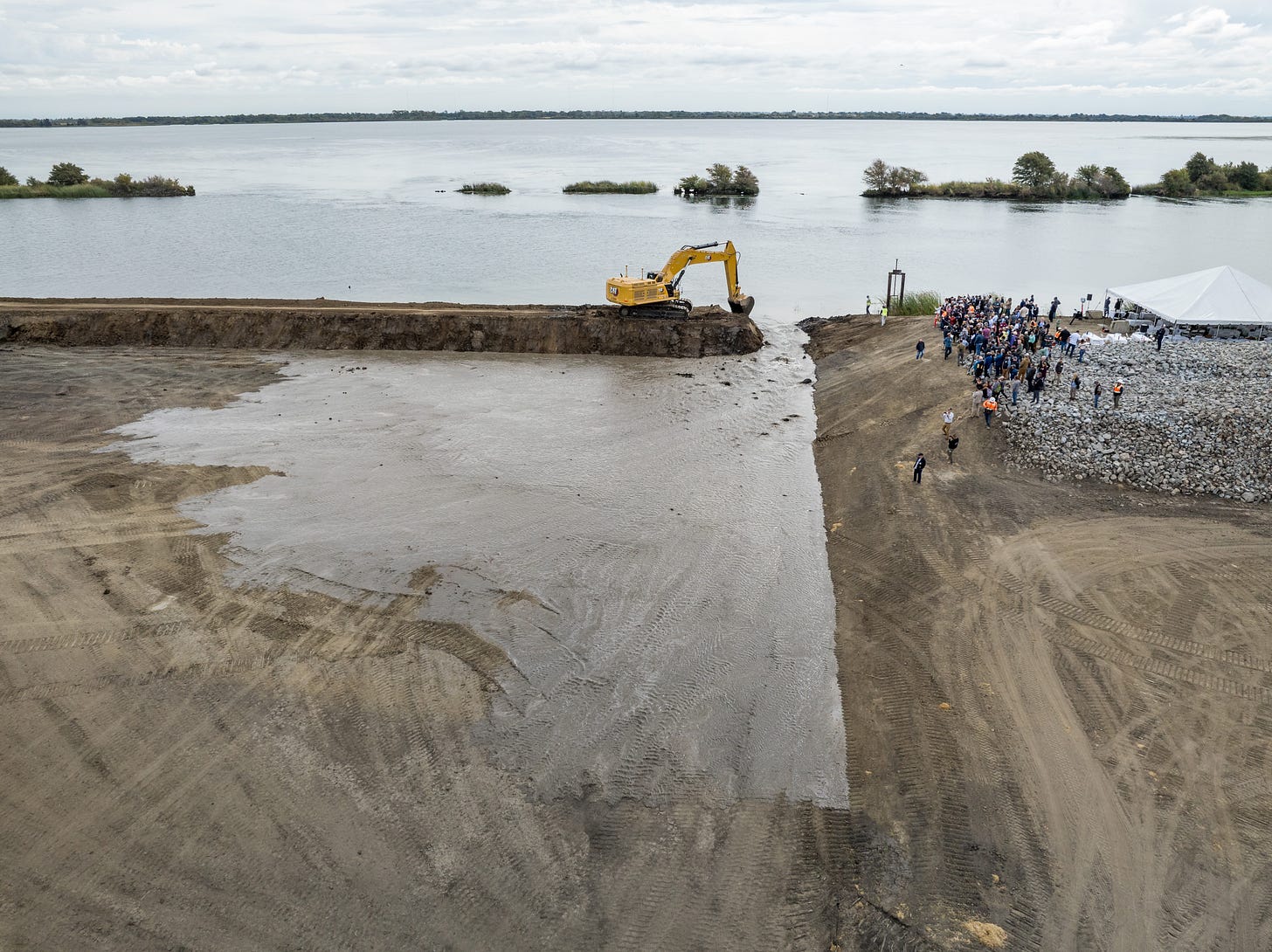
San Diego's Otay River estuary reconnected to the bay for the first time in decades
“Through our partnership with U.S. Fish & Wildlife, we were able to identify this area as a place where wildlife could thrive if we were able to bring in natural seawater again," said Peters.
They spent three years prepping the area with earthwork, hauling in more sediment, and grading the area. Next, they’ll be planting native vegetation to help restore coastal wetlands across the site.
Check out the video for more joyous footage of diggers taking out dikes.
Massachusetts farmers turn cranberry bogs back to wetlands
“We are excited to support projects that not only restore ecosystems but also prepare us for the impacts of climate change. These initiatives will enhance our ability to store and sequester carbon with nature and help us meet our net zero goals,” said Rebecca Tepper, secretary of the state’s office of energy and environmental affairs.
Klamath Tribes breach dike to restore wetlands and wocus in Southern Oregon
Oregon Public Broadcasting reports that much of the wetlands at the headwaters of the Klamath River have been drained for agriculture for over a century, making it harder to find wocus, or pond lilies, a food tribes have eaten for thousands of years. Now, they’re bringing back the waters:
Last month, the tribes teamed up with the U.S. Fish and Wildlife Service, Ducks Unlimited, Trout Unlimited and private landowners to breach a dike on the uppermost section of Upper Klamath Lake and restore 14,000 acres of wetland habitat.
The Lower Mississippi River’s largest ecosystem restoration project got the federal go-ahead
The Tennessee Lookout reports that native freshwater mussels, alligator gar and sturgeon will benefit from restoring floodplains and remeandering the river:
The main goal is habitat restoration to support the hundreds of species along the river by reconnecting secondary river channels, reforesting bottomland hardwood forests, seeding wetland plants and fixing bridges, among other things.
Washington study: Culverts came down, fish swam up
In Washington, the state is retrofitting 900 road culverts to improve salmon passage as part of a legal obligation resulting from a U.S. Supreme Court decision acknowledging that the culverts had impeded tribal fishing rights. Now scientists are using DNA sampling to show salmon are using the culverts and accessing hundreds more miles of habitat.
“This kind of sampling is really powerful because the fish can hide, but the DNA can’t,” said Ryan Kelly, professor of Marine and Environmental Affairs at the University of Washington and director of the eDNA Collaborative. “It’s like we’re detectives out there, pulling information out of the water about what lives where. For evaluating salmon passability in road culverts, it could be a game-changer because eDNA methods are massively scalable, and we’ve shown they work.”
Anyone else like watching dams come down?
Last month, Virginia completed the removal of a small dam that was part of an old mill, hoping to benefit fish, freshwater mussels, and more (watch on YouTube). The Klamath dam removals made headlines throughout the year last year. Watch before and after scenes of this majestic river flowing free of dams. In Washington, the Cowlitz Tribe and Columbia Land Trust tore town a dam in September, liberating six miles of habitat along the Washougal River. Check out the time lapse:
Not enough wetland joy? Here’s another story on keeping wetlands wet for wildlife:
Tahoe's sandhill cranes show wetland restoration is working
What dam removal or wetland renewal is happening in your corner of the world? Please share!
About Earth Hope
Earth Hope is a solutions-based journalism project that highlights environmental success stories from around the globe, because hope is the foundation of progress. I’m Amanda Royal, investigator of hope, former newspaper reporter and current eco-news junkie. Read more about this project and what inspired it. Thank you for being here.🙏
Visit earthhope.substack.com for more stories. For the best photo viewing experience, click the main headline above to view using a desktop browser. Use the “share” button at the top to help spread the news via email or other social media platforms.
Heads up, writers: I’m providing consults and beta reads for interested writers, including free perks for annual paid subscribers to this newsletter. Please read my Services page for more info.





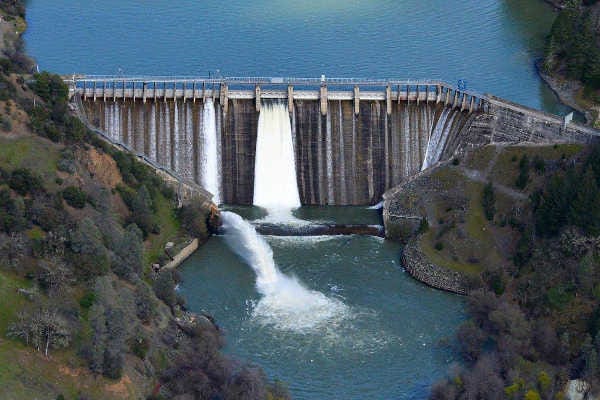
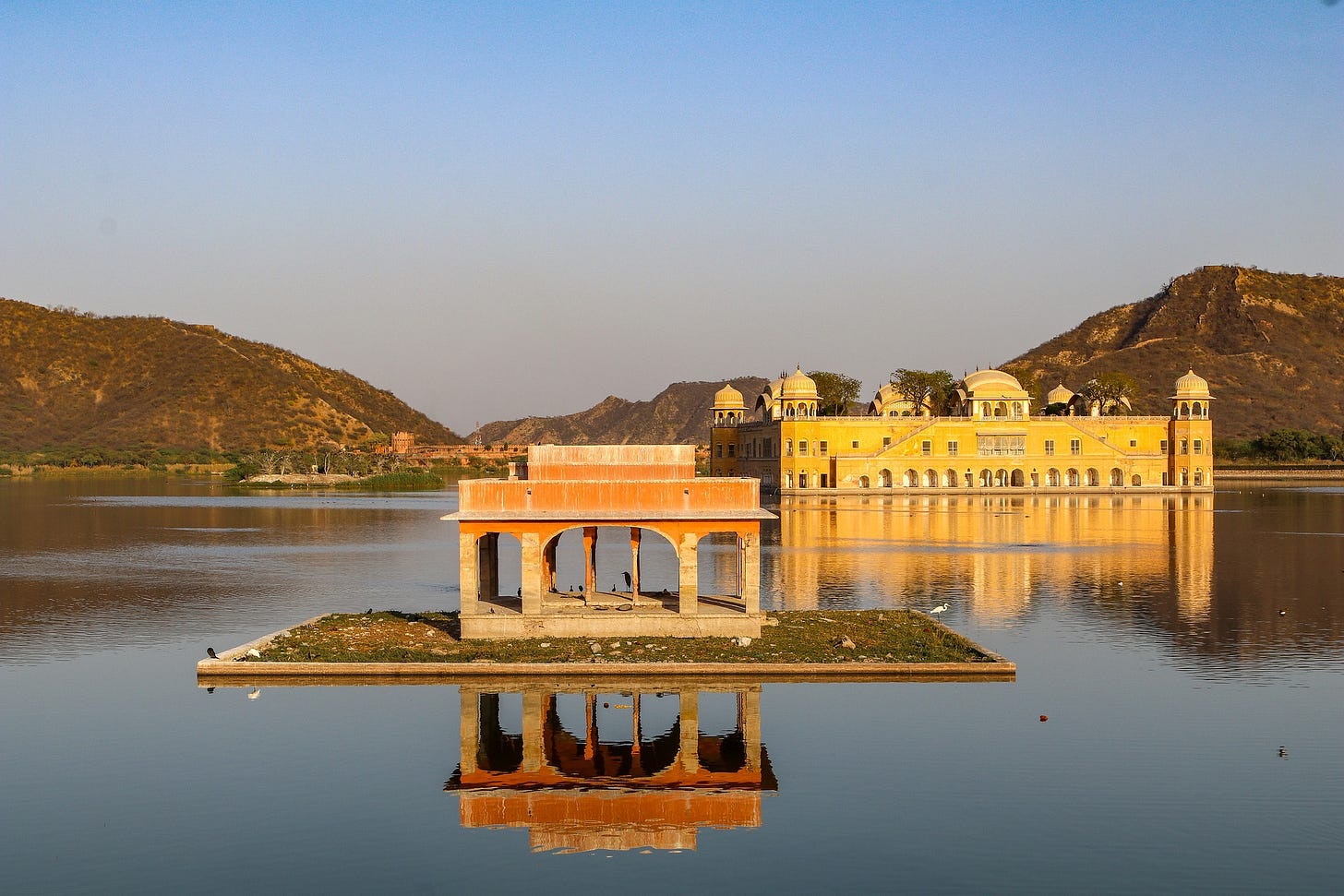
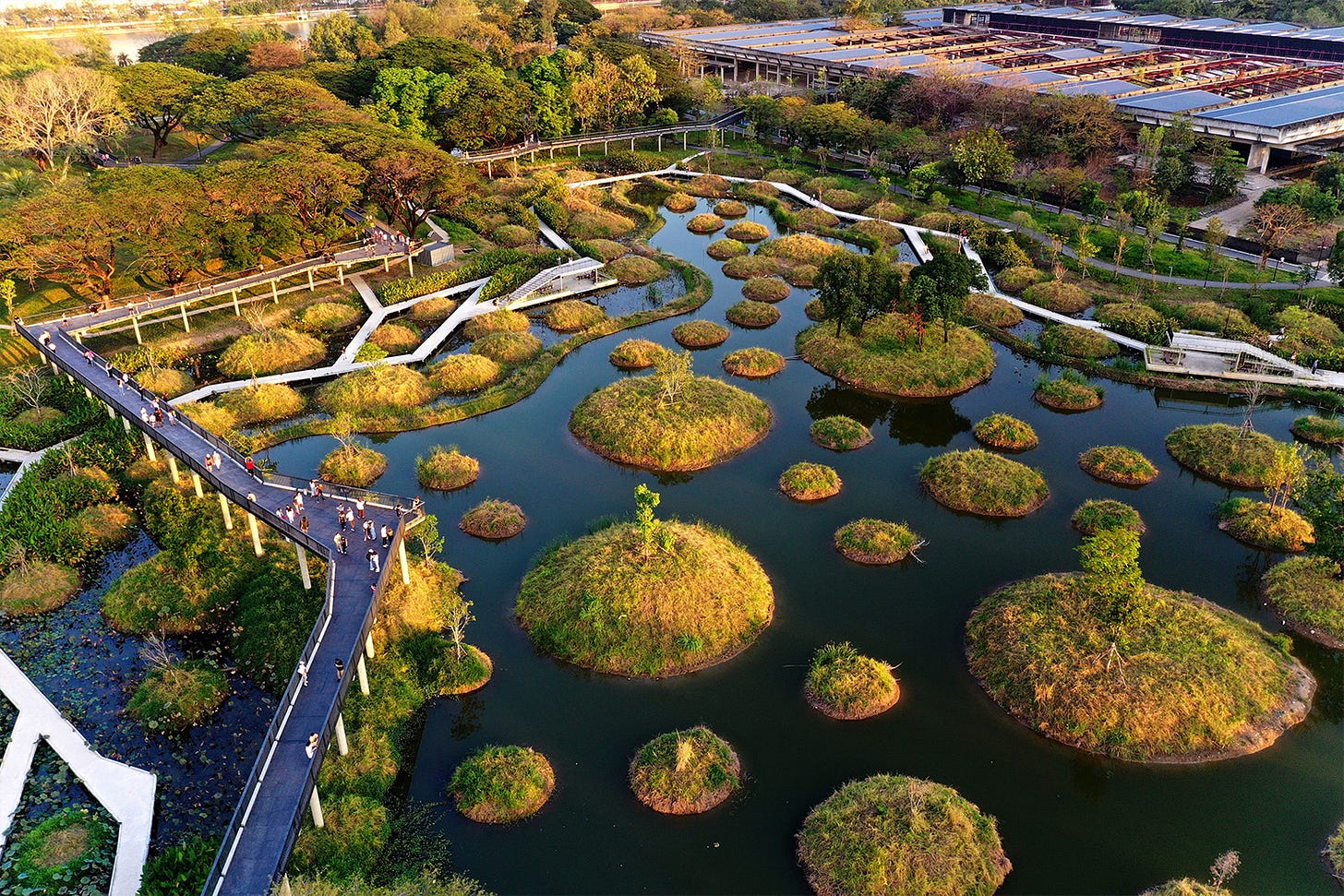
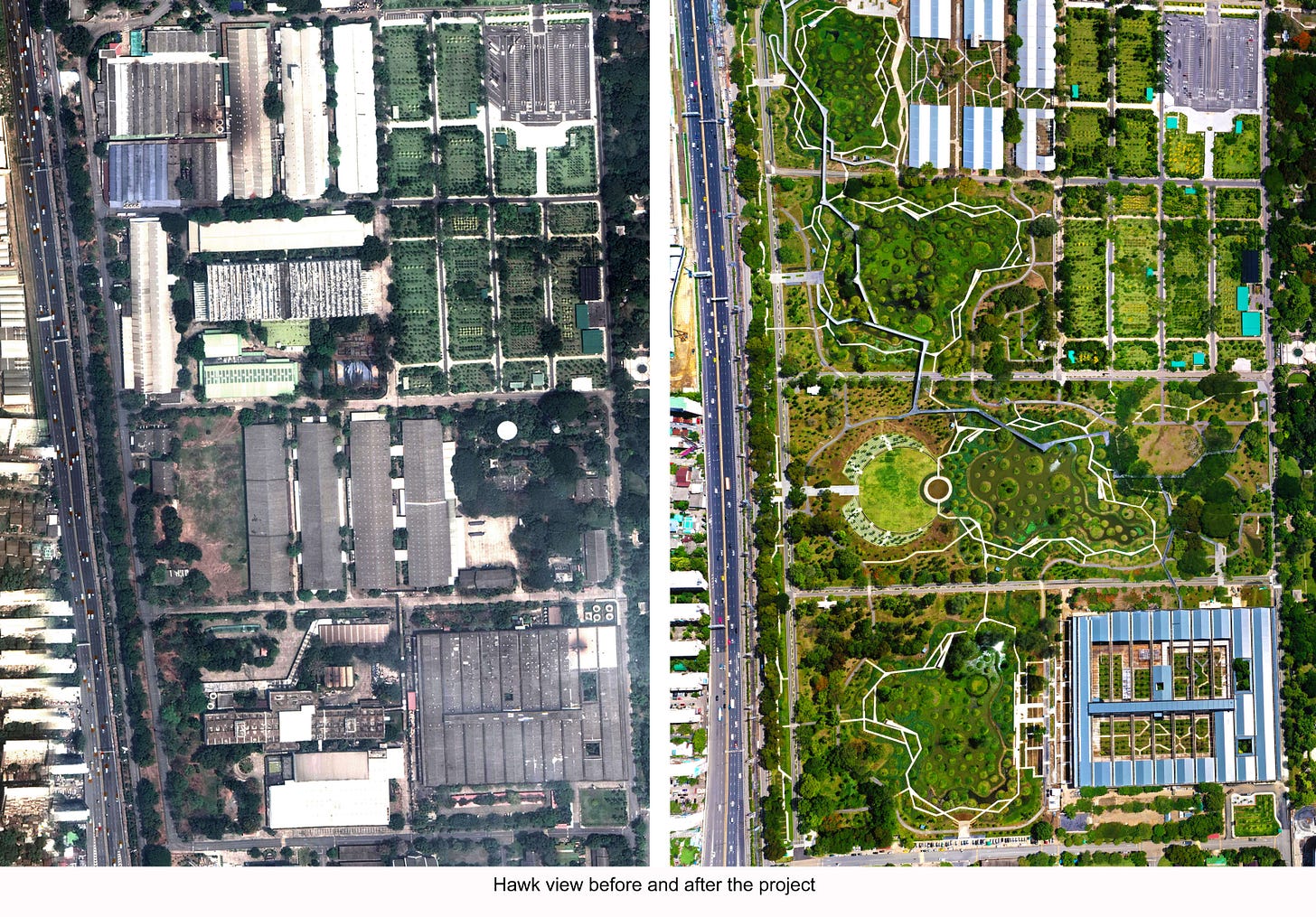

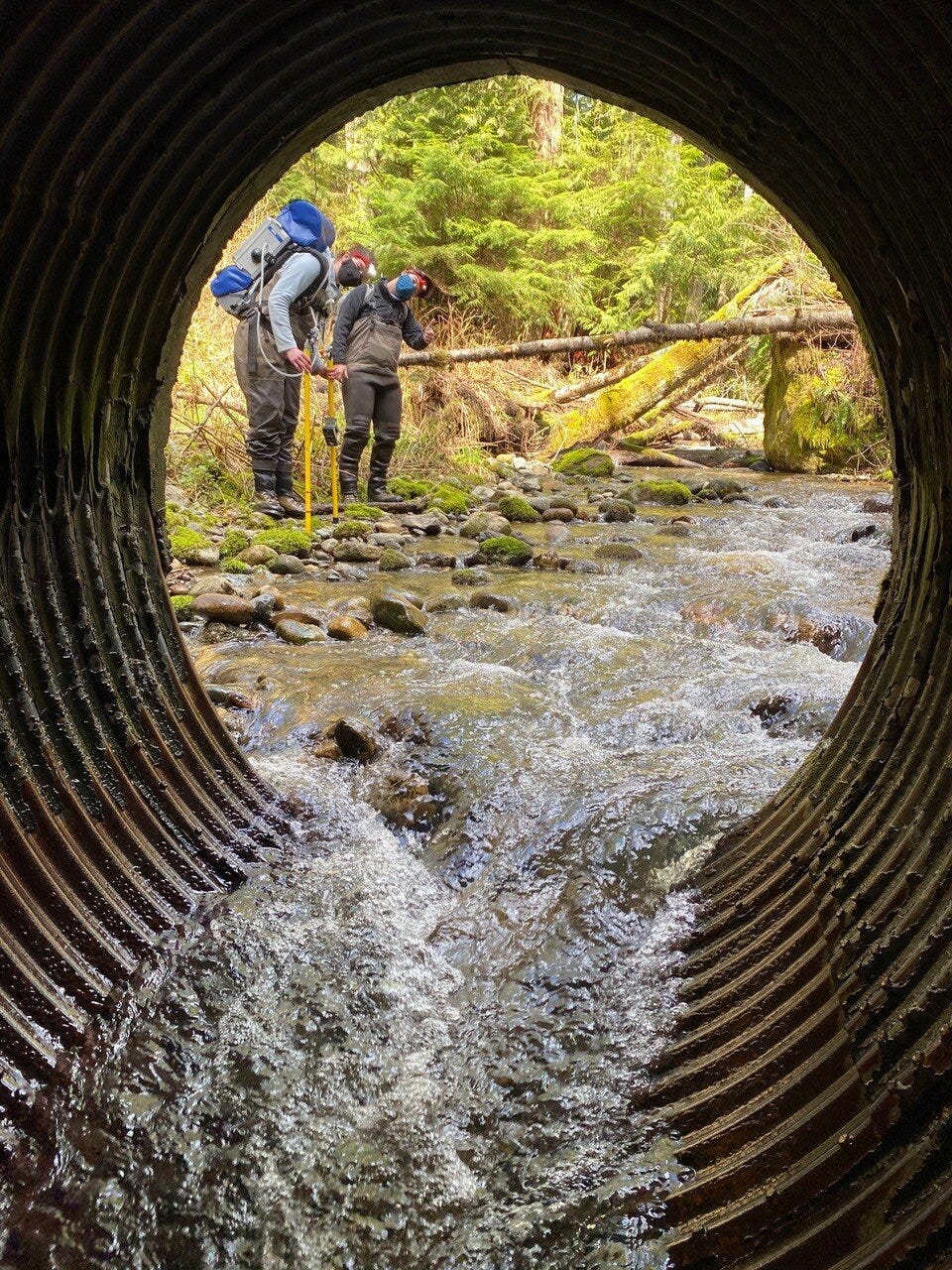
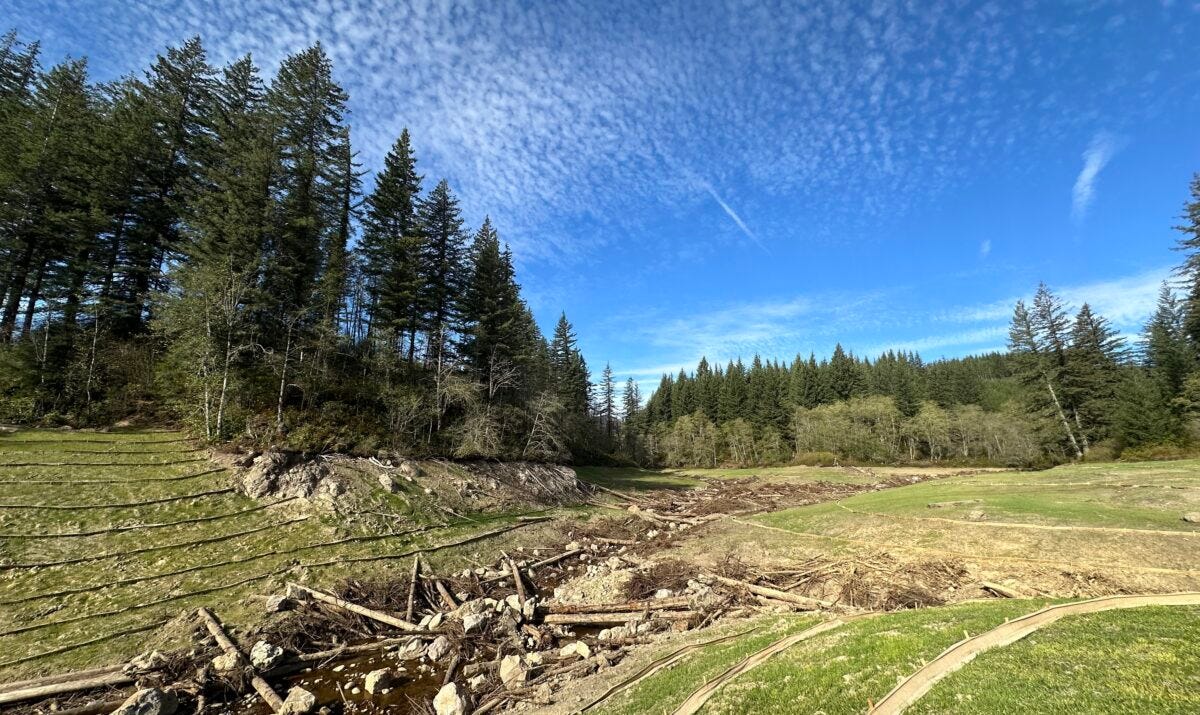

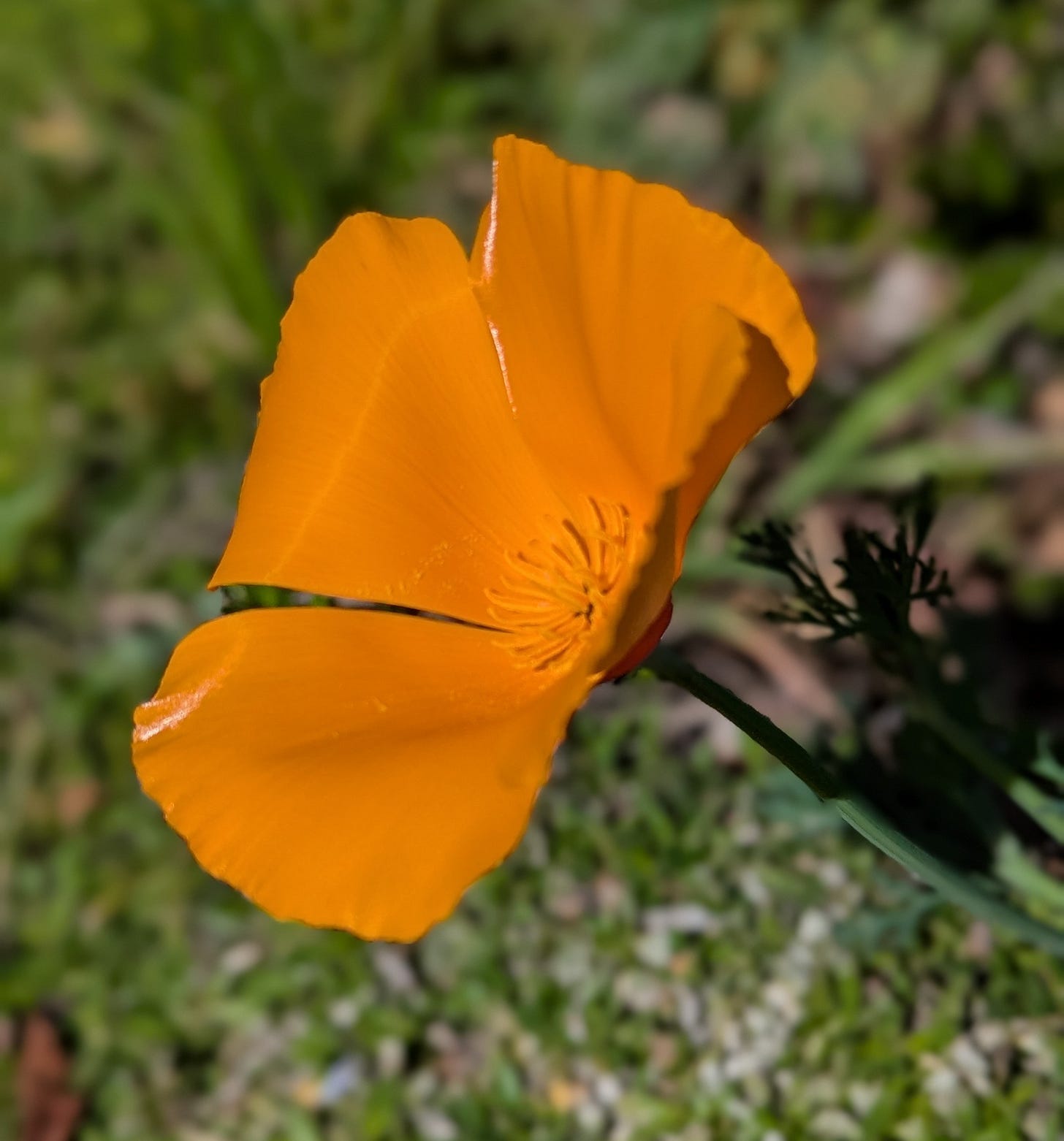
Amanda. Dams begone. In Maine 2023 for for first time in 40 years sturgeon returned to old spawning areas far inland up Androscoggin River. There were some reports of fish 10-15’ long. Somehow these fish knew the dam was gone. Like elephants they remember their old spawning grounds.
I loved reading this. On my island we created huge wetlands where tens of thousands of migrating birds make a stop to feed, rest, and gain the energy to continue. Also check out “room for the river” in the Netherlands. And, somewhat related: “sandmotor” in the Netherlands.